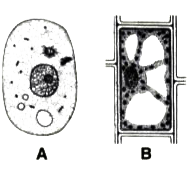The reduction potential of a metal X is - 0.76 volts while that of Y is - 2.38 volts. Which of the two metals is a stronger reducing agent ? Give reason for your answer.
To determine which of the two metals, X or Y, is a stronger reducing agent based on their reduction potentials, we can follow these steps:
Step 1: Understand Reduction Potential
Reduction potential (E°) is a measure of the tendency of a chemical species to acquire electrons and thereby be reduced. The more positive the reduction potential, the stronger the species is as an oxidizing agent. Conversely, a more negative reduction potential indicates a stronger reducing agent.
Step 2: Compare the Reduction Potentials
Given:
- Reduction potential of metal X (E°_X) = -0.76 V
- Reduction potential of metal Y (E°_Y) = -2.38 V
Step 3: Identify the Stronger Reducing Agent
To determine which metal is the stronger reducing agent, we compare the values of their reduction potentials:
- Metal X has a reduction potential of -0.76 V.
- Metal Y has a reduction potential of -2.38 V.
Since -2.38 V is more negative than -0.76 V, this indicates that metal Y is less likely to gain electrons compared to metal X. Therefore, metal Y will more readily lose electrons, making it a stronger reducing agent.
Step 4: Conclusion
Thus, metal Y is the stronger reducing agent because it has a more negative reduction potential (-2.38 V) compared to metal X (-0.76 V).
Final Answer
Metal Y is the stronger reducing agent because it has a more negative reduction potential (-2.38 V), indicating it is more likely to lose electrons compared to metal X (-0.76 V).
---
Reduction potential (E°) is a measure of the tendency of a chemical species to acquire electrons and thereby be reduced. The more positive the reduction potential, the stronger the species is as an oxidizing agent. Conversely, a more negative reduction potential indicates a stronger reducing agent.
Given:
- Reduction potential of metal X (E°_X) = -0.76 V
- Reduction potential of metal Y (E°_Y) = -2.38 V
To determine which metal is the stronger reducing agent, we compare the values of their reduction potentials:
- Metal X has a reduction potential of -0.76 V.
- Metal Y has a reduction potential of -2.38 V.
Thus, metal Y is the stronger reducing agent because it has a more negative reduction potential (-2.38 V) compared to metal X (-0.76 V).
Metal Y is the stronger reducing agent because it has a more negative reduction potential (-2.38 V), indicating it is more likely to lose electrons compared to metal X (-0.76 V).
Topper's Solved these Questions
- BOOK - ICSECHAPTER - ELECTROCHEMISTRYEXERCISE - Follow up Problems48videos
ELECTROCHEMISTRY
- BOOK - ICSECHAPTER - ELECTROCHEMISTRYEXERCISE - EXERCISE (PART-I Objective Questions)28videos
ELECTROCHEMISTRY
- BOOK - ICSECHAPTER - DISTINCTION BETWEEN PAIRS OF COMPOUNDS EXERCISE - QUESTIONS155videos
DISTINCTION BETWEEN PAIRS OF COMPOUNDS
- BOOK - ICSECHAPTER - GENERAL PRINCIPLES AND PROCESSES OF ISOLATION OF ELEMENTS EXERCISE - EXERCISE (PART-I ( OBJECTIVE QUESTIONS )) (Fill in the blanks)60videos
GENERAL PRINCIPLES AND PROCESSES OF ISOLATION OF ELEMENTS
Similar Questions
If standard electrode potential of an element x is -1.70V and of another y is +1.07V. Which one of these is strong reducing agent?
View SolutionWhich term of the AP : 21, 18, 15,... is −81? Also, is any term 0? Give reason for your answer.
View SolutionGive reason:
Alkali metals are good reducing agentsView SolutionGive reasons why?
Alkali metals are good reducing agent.View SolutionGive a reason for each of the following:
Alkali metals are good reducing agents.View SolutionDoes the charge given to a metallic sphere depend on whether it is hollow or solid ? Give reason for your answer.
View SolutionGiven below are the sketches of two types of cells A and B

Which one of these is a plant cell? Give reason in support of your answer.View SolutionGive reasons for the following:
Alkali metals are good reducing agents.View SolutionGive reasons for the following:
Alkali metals are good reducing agents.View SolutionTwo metallic elements A and B have the following standard oxidation potentials :
A=0.40V,B=−0⋅80V. What would you expect if element A was added to an aqueous salt solution of element B ? Give a reason for your answer.View Solution

